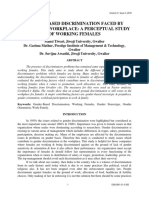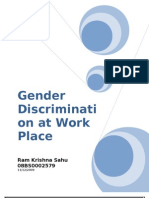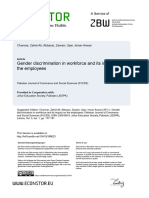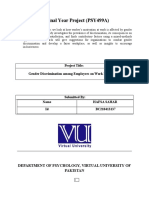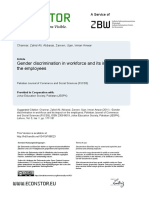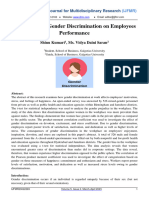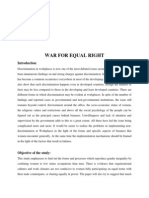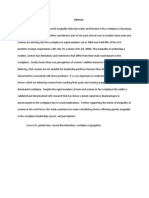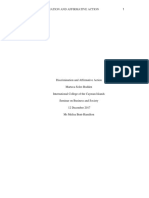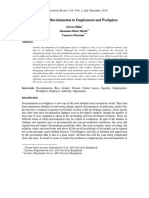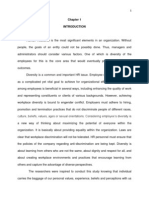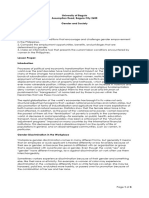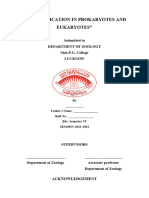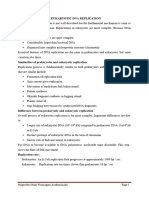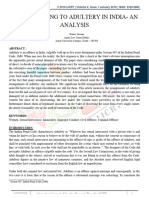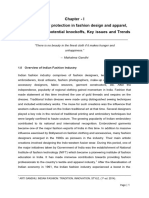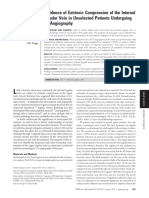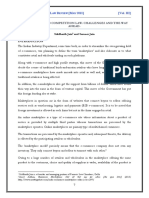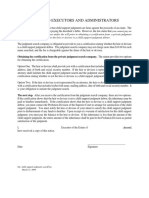0% found this document useful (0 votes)
40 views10 pagesImpact of Gender Based Discrimination On Employee Performance in Case of Nepalese Commercial Banks
This document discusses how gender discrimination can impact employee performance in Nepalese commercial banks. It explores different dimensions of gender discrimination like promotion, recruitment, compensation, and benefits. The study aims to analyze the relationship between gender discrimination and employee performance using quantitative tools. It reveals that discrimination in promotion and recruitment policies contributes more to variations in employee performance, while compensation and benefits have less effect.
Uploaded by
Suraj DubeyCopyright
© © All Rights Reserved
We take content rights seriously. If you suspect this is your content, claim it here.
Available Formats
Download as PDF, TXT or read online on Scribd
0% found this document useful (0 votes)
40 views10 pagesImpact of Gender Based Discrimination On Employee Performance in Case of Nepalese Commercial Banks
This document discusses how gender discrimination can impact employee performance in Nepalese commercial banks. It explores different dimensions of gender discrimination like promotion, recruitment, compensation, and benefits. The study aims to analyze the relationship between gender discrimination and employee performance using quantitative tools. It reveals that discrimination in promotion and recruitment policies contributes more to variations in employee performance, while compensation and benefits have less effect.
Uploaded by
Suraj DubeyCopyright
© © All Rights Reserved
We take content rights seriously. If you suspect this is your content, claim it here.
Available Formats
Download as PDF, TXT or read online on Scribd
/ 10
